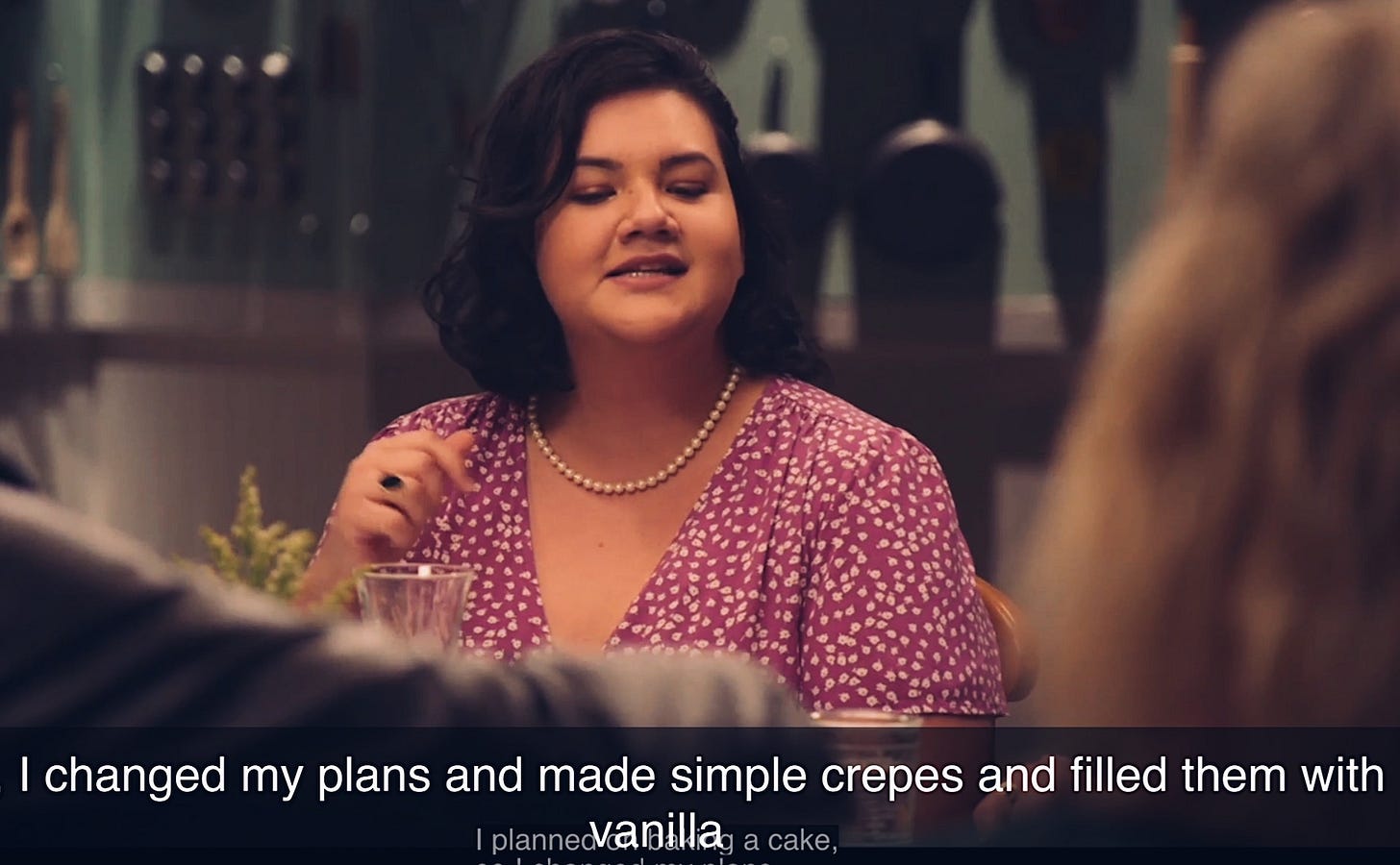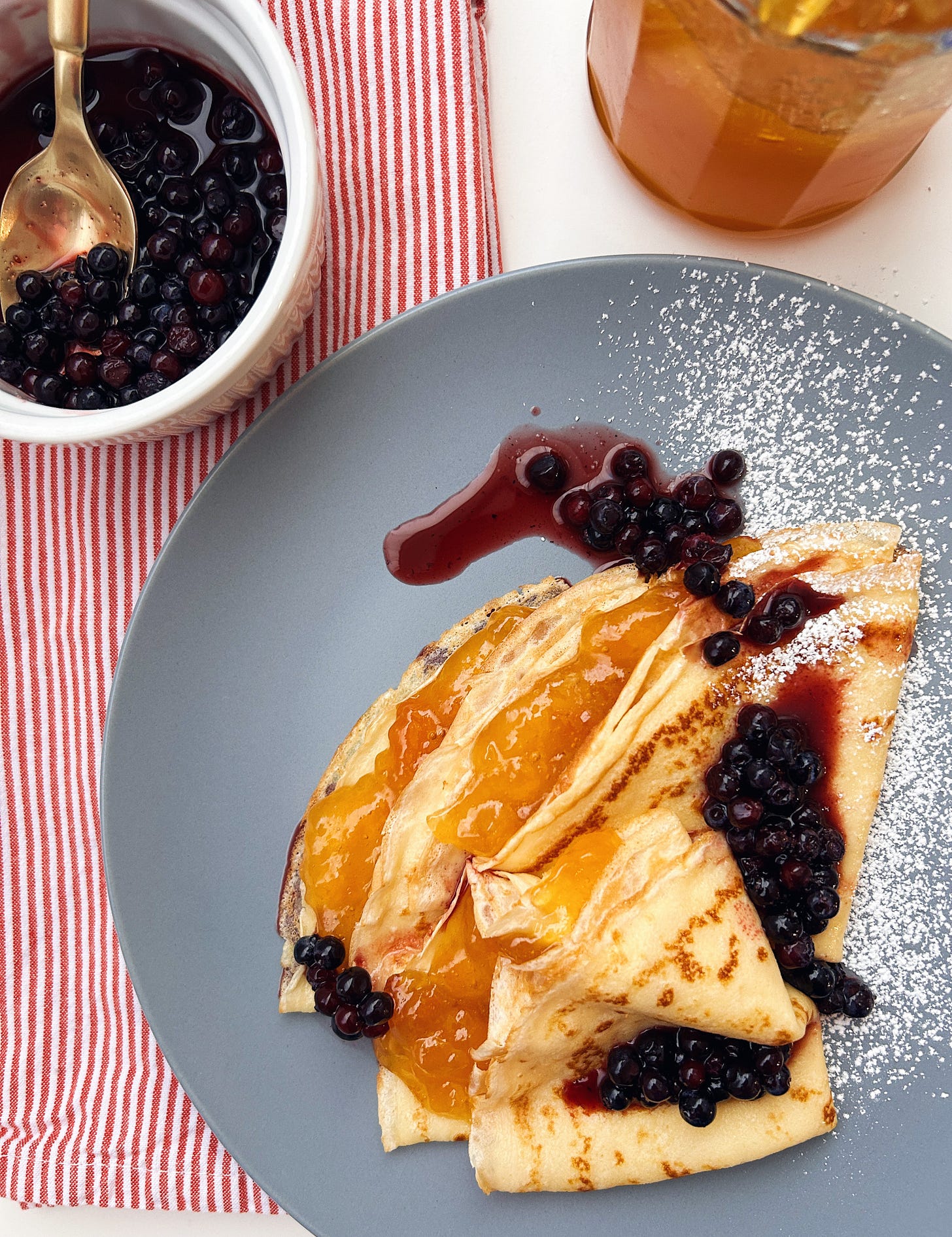Every carnival ends, says this Brazilian song I like, but not before having pancakes for Fat Tuesday. Well, Wednesday, in my case. Hope it's not too late.
In my country, we call crêpes pancakes — or panquecas. No room for the American fluffy buttermilk-flavored clouds; we like it thin, and usually savory.
I never researched, if I'm being sincere, to learn more about our fascination for crêpes in Brasil. Still, you would be impressed by how popular they are and how much they make delightful appearances on Brazilian tables — often! I know at least five Brazilians who swear panquecas are their favorite dish in the whole world. Fascinating, isn't it?
European influences, of course, but we found a way to make it our own, as so much of it is in Brazilian cuisine.

I plan on bringing you savory panqueca (and its fixings) recipes soon, but meanwhile, following the pancake trend I've been bombarded with on Instagram this whole week, I'd love to share my incredibly reliable crêpe recipe. Feel free to call it a pancake.
This is a recipe I know by heart. It comes in handy often because it's simple, and simplicity can bring you big rewards, mon amie.
I tended to struggle with lumpy batter issues when the topic was crêpes. For that, my mother-in-law, the crêpe master in our family, recommends using the blender. So does Julia Child in Mastering the Art of French Cooking.
Their blender technique is a success, indeed. However, it also requires resting time for the batter, a key step to relax the gluten and produce a more tender final product. It works, but you need patience.
I tend to be a patient cook, but sometimes when I want to cook for myself and myself only, I indulge in spending less time by the stovetop and more time chewing (I love making these in the late afternoon to eat while I sip black coffee and page through a still unchartered cookbook).
In search of the perfect (and speedy) crêpe recipe, I came across this video of chef Jacques Pépin performing what is, to me, the best crêpe recipe in the world.
Not only is his technique perfect, as is his recipe. Which is also my mother-in-law's recipe. And my mom's recipe! Same ingredients, astonishingly different methods.
What interests me the most is how delicate & adaptable these crêpes are. They're marvelous for breakfast, filled with a slice of cooked ham & provolone cheese — right after they're taken out of the pan, so the cheese melts with the residual heat. If dinner is on the schedule, they're great filled with roasted root vegetables, then covered with a thick layer of béchamel sauce and gratinéed. Whenever you need a sweet treat, just smear them with a fat spoonful of Nutella, as the French do.
I make them at least once a month at home and I made them twice during The Julia Child Challenge — both in savory and sweet versions. To my complete happiness, they were the dessert that made me win! Didn't I tell you simplicity can bring big rewards?
Call it a crêpe, call it pancake, call it delicious!
I hope these will become a staple in your home, too.
My Favorite Buttery Crêpes
Recipe adapted from chef Jacques Pépin
Makes 4
Ingredients:
1 generous tablespoon of unsalted butter
1 egg
1/2 teaspoon granulated sugar
1 pinch of salt (it's literally a pinch — you don't need to measure it)
1/3 cup of all-purpose flour
1/2 cup whole milk
2 tablespoon room temp water
How to make it:
The batter:
In a medium-sized, about 10-inch, nonstick skillet, over medium heat, melt the butter until it starts bubbling, then take off the heat and leave it to cool in the pan.
In a medium bowl, whisk together the egg, flour, half of the milk, salt, and sugar until you get a smooth, thick paste, then add the melted + cooled butter. This will ensure you a lump-free batter.
Then whisk in the rest of the milk, and lastly the water. Aim for a heavy cream consistency. Add a splash of extra milk if you need to thin the batter slightly.
If possible, let it rest for 30 minutes. It also works wonders without resting time.
Making the crêpes:
Wipe out the excess butter from the skillet and position it over medium heat.
Using a small ladle or a 1/4 measuring cup, pour the batter onto the skillet and tilt the skillet to distribute the batter evenly (watch the video linked above for more guidance on the technique).
Don't worry if your first crêpe looks like a disaster. It's still going to be delicious.
Cook over moderately high heat until the edges of the crêpe curl up and start to brown — giving them that lacey look —, I'd say for about 45 seconds.
Flip the crêpe and cook for 10 seconds longer, until a few brown spots appear on the bottom. Turn the crêpe out onto a plate (you can always use the help of a spatula). Repeat with the remaining batter to make 4 - 5 crêpes.
* I filled my crêpes with a spoonful of apricot jam each, then marinated 1/4 cup of frozen wild blueberries with 1/2 teaspoon brown sugar + 1 tablespoon of Cassis Liqueur, which I spooned over the folded crêpes.
Notes:
If you're making them sweet, you can add a touch of vanilla extract to the batter.
Even if you're filling them with something savory, make sure to add sugar to the recipe — the sugar will give it its characteristic caramelization.
Crêpes should always be cooked over medium to slightly high heat. In my induction, it's number 5.
They will steam and bubble as they cook on the first side, and you should watch for this indication that it might be time to turn the crêpe.
Depending on the filling you have, these can be reheated in a 350F oven, and they will become so incredibly crispy.
Be creative with your fillings! And please send me a photo later if you make them.
Merci,










I love this recipe, its so simple but so versatile, also is fun and easy to make it.
That book looks intriguing. I must investigate. Ruth Levy Berenbaum is well known for her Jewish baking, and check out Jake Cohen’s fascinating book JEW-ISH, an amalgam of traditional Jewish baking with middle eastern influence. It’s a great read with great recipes!